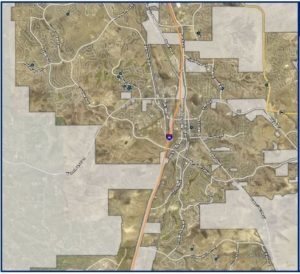Designed to give people assistance with daily living and lend aid to individuals with a level of physical or cognitive impairment, many assisted living and memory care facilities are operating in residential neighborhoods. At Monday’s Town Hall meeting, residents gathered to give their input concerning the possibility of further regulating care facilities operating next door.
Trish Kakenmaster has lived in the Red Hawk neighborhood for the past 18 years near two homes that care for adults, one for residents with Dimentia. “You would never know honestly, that this is what the house is,” said Kakenmaster. “It is immaculate on the inside and out and they are the best neighbors.”
This particular care facility has been in operation for the past 10 years, posing no threat to her family. However, on one occasion, she did have an unexpected visitor.
“One of the residents got into my house while I was out in the yard,” she laughed. “It was actually the day after my son’s prom and he’d just gotten home and my son was like, “Mom there is someone in the kitchen.”
After a quick call to the facility, the wandering resident was picked up by nurses. “It was okay and we were fine…they came and took her back.”

Likewise, a similar care facility operates on the next block, giving them no trouble. “My neighbor’s house backs up directly to them and they can talk over the fence with residents; they have even had some residents over for dinner.”
Managed by the same company, Kakenmaster feels her experience with the residences has been very positive and that they have assimilated well into the neighborhood. Although some residents have been undisturbed by their presence next door, others who live near one of the 14 facilities in neighborhood zoning have a slightly different take.
3-year resident of the Crystal Valley neighborhood, Patrick McCabe, had anticipated the business easily integrating into his subdivision. “We were hoping that they would be residents that just needed extra care,” he noted in reference to those with Dementia, Alzheimers or needing mental care. “Instead it seems to be for end of life care as well because there appears to be a lot of turnover.”
Along with regularly changing faces, the home has also been modified to accommodate more residents. “It appears that there are a lot of people living there since they converted the 3-car garage into more bedrooms,” he added. With the conversion, they now have no storage for things like trash.

“You can move into a single family home and put 16 or more residents in it,” he continued, “Because they can’t store anything in the garage now, bags of trash are left outside for the animals to get into and spread around the property,” said McCabe.
“The Town code was amended in 2006 on the definition of family to include: any number of adults – group of adults – living together with unrelated associated resident staff, subject to state occupancy licensing,” stated Mary Shaw, Castle Rock Zoning Manager. “Currently, there are no Town regulations as to how many people can live in a house.”
The code was amended intentionally so that Town regulations would be more in line with the federal housing regulations. “These types of uses are intended to be integrated into residential neighborhoods to allow elderly people to age with ease and allow disabled people to live in a residential setting,” said Shaw.
Yet, where community concern lies is that Town zoning regulations do not limit occupancy for a single-family-home because legislative record does not support regulation. “Those are things we can take to council for discussion in April,” Shaw commented. “A group of unrelated adults is subject to state regulations and that is something they will be looking at.”
As council enters unfamiliar waters, they are going to have to weigh the legalities of their options.
“There have not been a lot of municipalities or counties that have spacing requirements and occupancy requirements, so it’s up to council to act to direct staff to possibly draft a code amendment or to require a public hearing,” Shaw continued, “We don’t want to be liable for operating in a discriminatory way…there’s a need for this use and the intention for the Town regulations is to allow it.”
McCabe, who has a grandmother living with dementia, personally understands the need for these facilities to be placed in residential zones. He and his family just want to see that their neighborhoods are equally protected by requiring they meet more specific regulations.
“It bothers me that there is a property in a residential neighborhood, that is a ‘for profit’ business, that can come in and capitalize on us and change the feel and the dynamic of our community; as an HOA we are powerless to act and the Town is powerless to act and they (the care facility) can get away with it.”













